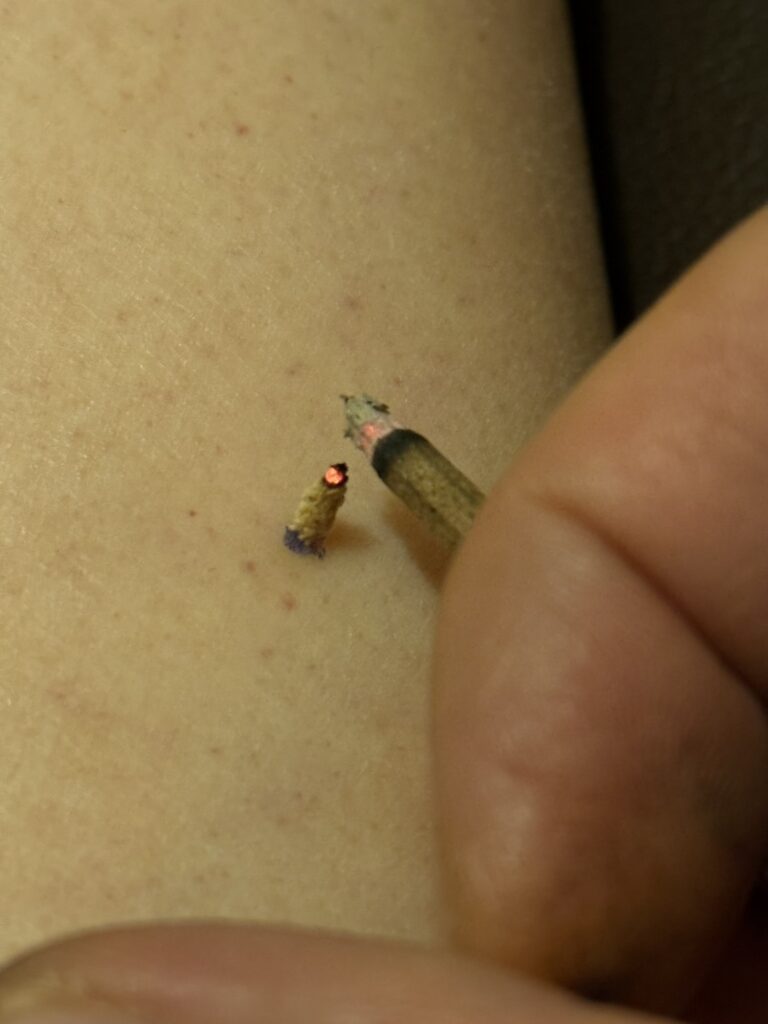Hello, this is Hiroshi.
The other day, a woman who regularly comes for acupuncture visited the clinic.
When I greeted her, she told me that she had been experiencing pain during urination since that morning and still had lower abdominal pain at that moment.
Pain during urination can indicate urethritis, cystitis, or possibly pyelonephritis.
She said she hadn’t noticed any blood or pus in her urine.
Since she also had a previous history of cystitis, I suspected it was likely acute simple cystitis.
In any case, since she had pain during urination, it was clear that she was dealing with a urinary tract infection (UTI).
Along with work-related stress, the sudden temperature drop over the past few days and the cold rain may have caused “coldness” to enter her body.
In Kampo (traditional Japanese medicine), external pathogens—including bacteria, viruses, wind, dampness, cold, and other environmental factors that invade the body and cause disease—are called “gai-ja” (外邪, external evils) or “ekirei” (疫癘, pestilential qi).
When the body becomes fatigued and cold, its defensive strength weakens, allowing these external evils to penetrate and cause illness.
For such symptoms—essentially infections—moxibustion (お灸 okyu) works very well.
Scientific research has shown that moxibustion can trigger a variety of physiological reflexes in the body, and it is also highly effective for urinary tract infections.
The warmth of the 艾moxa helps heat the body, promote the circulation of qi and blood, dispel internal cold, and restore overall health.
In this case, I applied moxibustion to specific acupuncture points known to be particularly effective for UTIs (urethritis and cystitis).
I rolled small grains of moxa (about the size of a rice grain) and placed them on selected points, then lit them with incense.
When about 80% of the moxa had burned, I pinched it off with my fingers to extinguish it and removed the ash.
This technique is called “八部灸Hachibukyū”.
The acupuncture points I used this time were:
Sanyinjiao(三陰交 / San-in-kō, SP6), Zeggu(絶骨 / Zekkotsu, GB39), Jiliao(次髎 / Jiryō, BL32), Geliao(下髎 / Geryō, BL33), and Shenshu(腎兪 / Jinyu, BL23).
When there is pain during urination or discomfort in the lower abdomen, as in this case, I apply moxibustion a few extra time
I check the patient’s sensations, asking, “How does it feel now?” while continuing treatment.
The woman was surprised, saying,
“While you were doing the moxa, I felt something moving inside my abdomen, and the pain gradually faded away!”
After continuing for about 30 minutes, the lower abdominal pain she had felt constantly was gone.
To prevent recurrence, my wife prescribed a Kampo herbal formula effective for cystitis.
As temperatures continue to drop and the air becomes dry, prevention is important.
Adequate hydration—drinking plenty of water or warm teas—is essential to prevent cystitis.
Also, fatigue weakens immunity, so be sure to rest well on your days off, stay warm at night, and go to bed early.
As a preventive measure, I also recommend avoiding the use of bidet or washlet functions in public restrooms, as they can sometimes be a source of infection.
Those who have had urinary tract infections in the past should be especially careful.
For internal inflammations like these, the combination of moxibustion and Kampo medicine works exceptionally well.
If you suffer from similar symptoms, feel free to consult us anytime.
Hiroshi


